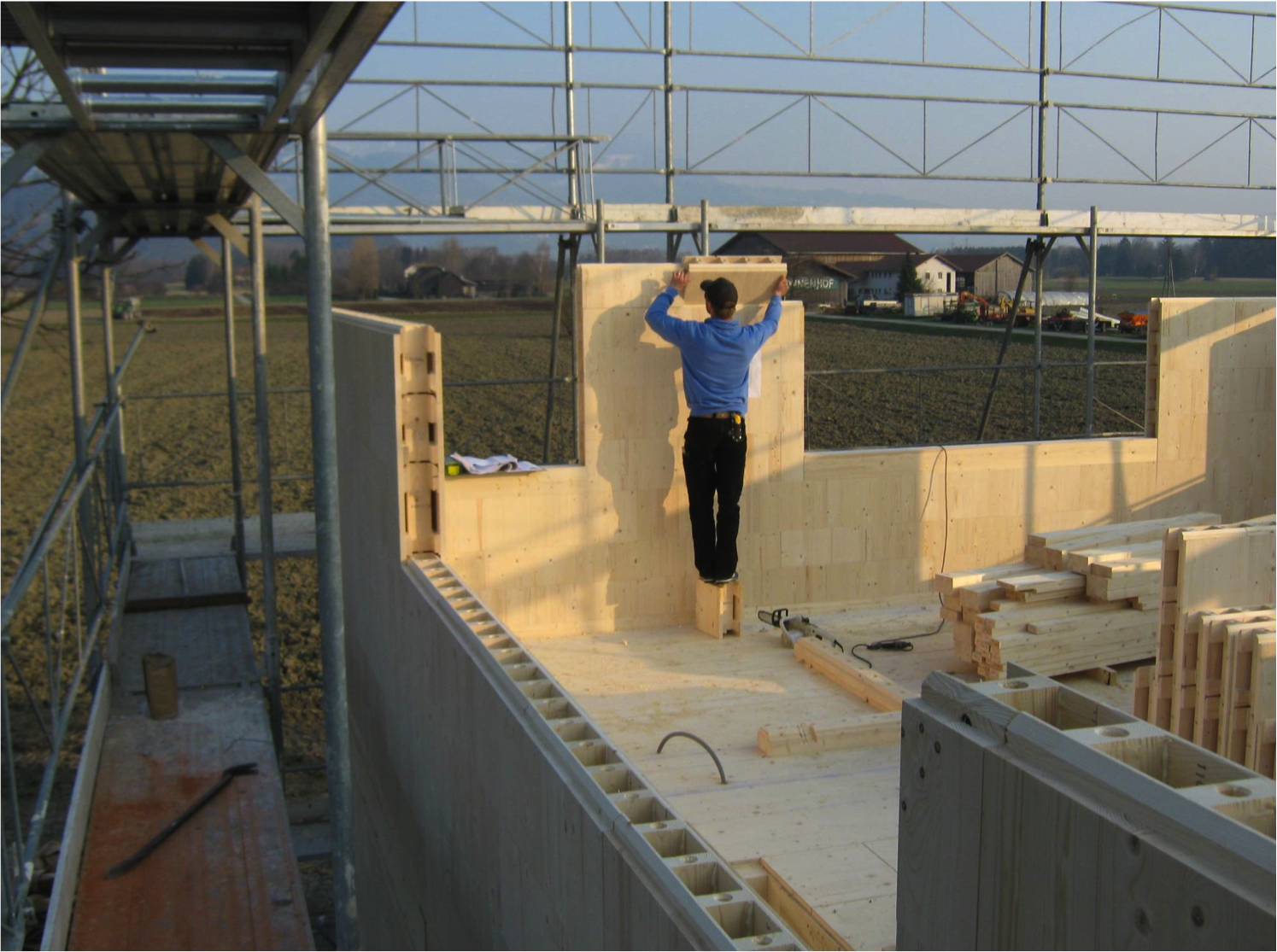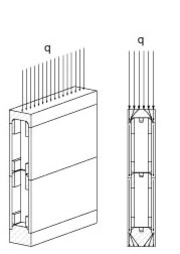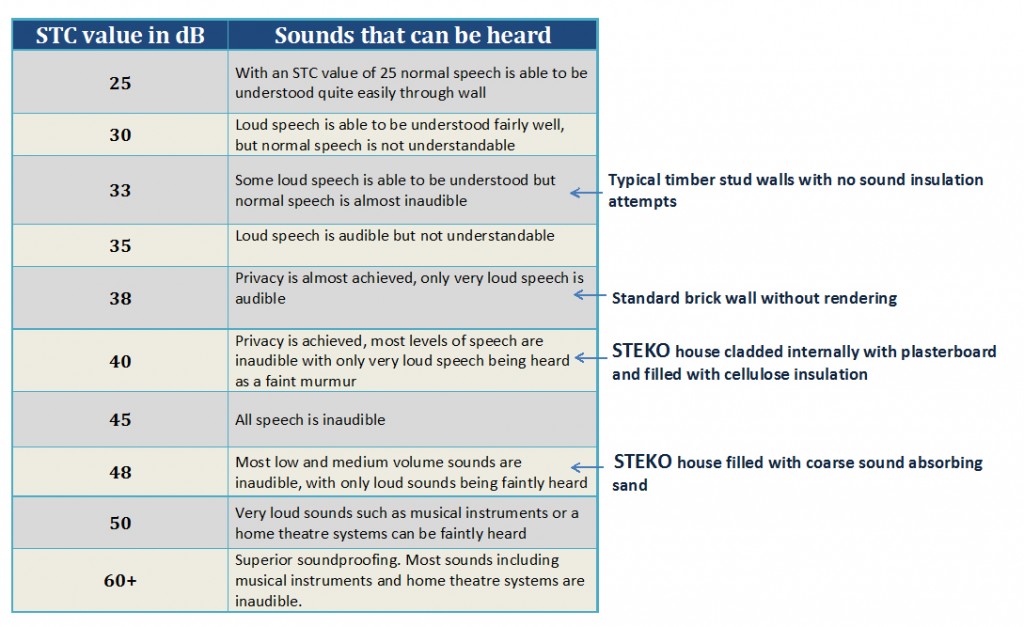Structural Behavior
STEKO® is highly loadable. The outstanding loading capacity is the result of the intensive and systematic organized development work done in the test laboratory ETH (Eidg. Technische Hochschule, Swiss technical university) and in the building practice. The results of the studies are included in the calculation guidelines “Principles of the calculation and assessment of the STEKO® construction”. The currently available working document is: Version 1.0, January 10, 2001
In Germany the STEKO® construction has been approved by the Institute of public right (Deutsches Institut für Bautechnik, German institute for construction technology, Berlin). The certification number (Allgemeine bauaufsichtliche Zulassung) is: Z-9.1-464
q ≤ 128 kN/m (beech threshold) F ≤ 89.6 kN/m (beech module)
Excellent Sound Reduction
In a world full of artificially created noise, comfortable and silent living spaces are essential. Perhaps you have considered building on a main road, next to a train station or in a notoriously noisy neighborhood but were discouraged by the idea of never having peace and quiet. Now you don’t have to restrict the choice of location for your new home based on noise. Timber construction naturally reduces sound absorption better than materials such as concrete or brick. By filling the cavities of internal walls with sound absorbing sand, noise will be kept to a minimum, allowing you to have peace and quiet in your own home.
Timber is an excellent sound absorbing material, making a STEKO® construction perfect for any place where noise dampening is important. STEKO®’s excellent acoustic performance and sound insulation abilities can be attributed to the hollow cavity inside the module’s shell. This design gives you the freedom easy to choose the level of sound reduction that is desired. If a high level of sound reduction is necessary then the wall cavities of internal STEKO® walls may be filled with coarse sand. With this simple and very inexpensive method, sound will be dampened drastically to produce an STC value of approximately 48 dB, where all levels of speech are inaudible and only medium to loud sounds can be heard slightly. By using different cladding materials or two-layered construction an STC value over 50 dB can certainly be achieved.
The thermal and acoustic efficiency and performance of a house is often determined by comparing ‘U’ and ‘STC’ values respectively. The table below provides a guide for understanding the different levels of sound transmittance and thermal efficiency and to compare STEKO®’s STC value with other typical construction methods.
U – Value
Thermal transmittance when written as an integer is known as a ‘U- Value’. U- values are measured in W/m²/K and they indicate the rate of transfer of heat in watts across and area of one square meter. In simple terms, a U- value measures how well a building component, such as a wall, a window, or a ceiling, keeps heat inside a building. Well-insulated building structures have a low thermal transmittance whereas poorly insulated buildings have a high thermal transmittance- meaning the lower the U- value, the better!
When STEKO® is used with simple cellulose insulation material with a total wall thickness of 160mm, it has a U-value of 0.42 W/m²/K.
This table indicates the ‘U-values’ that can be achieved using STEKO® with additional insulation to create a very low energy home. Passive homes typically require a U-Value of less than 0.2 W/m2/K.
Heat Insulation
The STEKO® walls prove their outstanding insulation qualities already in the structural work. An insulation of the exterior walls would further improve the heat protection and the STEKO® building system is predetermined for the construction of minimum, low-energy and passive houses. The entire constructed STEKO® shell is vaporizing. The regulation of temperature and humidity takes place through the pores and cells of solid wood – just like the human skin.





